17 Best Strawberry Varieties For Growing at Home
Are you imagining a summer garden bursting at the seams with fresh, juicy strawberries? Now’s the time to consider the different types you can grow and select varieties well-suited to your garden and needs. Join organic farmer Jenna Rich for a list of the 17 best strawberry varieties for growing at home.
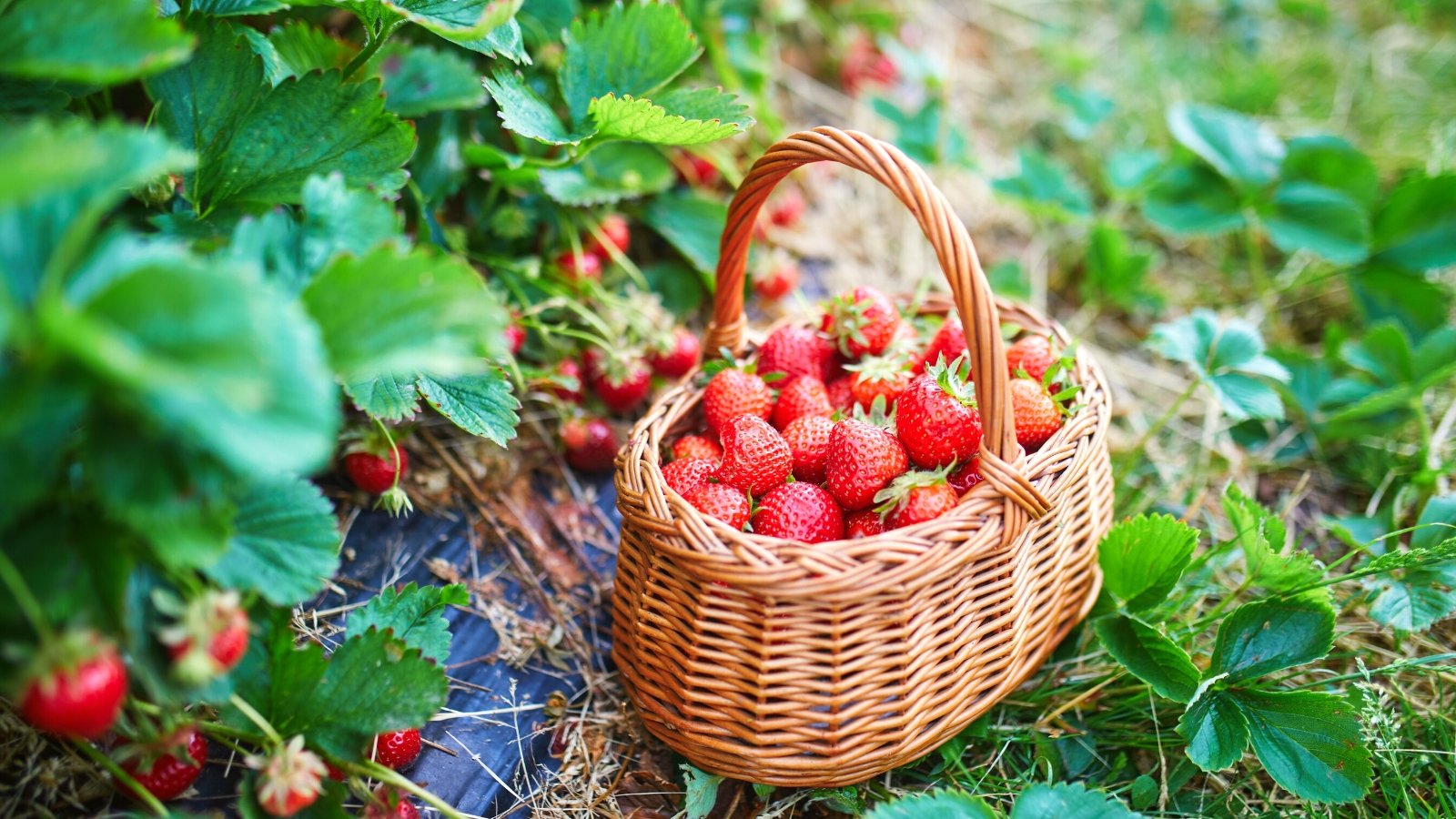
Contents
Strawberries are easy to grow in areas with mild climates with no frost, like California, the Pacific Northwest, and Florida. But fear not, northern growers! Many strawberry varieties on the market will perform in colder climates with added protection and TLC. They ship after your last frost date as dormant bare roots or purchased as plugs at your local nursery.
Once they’re transplanted and established, they can survive as perennials for many years with proper care, though you may grow them as annuals, planting new each season. The time to plant strawberries depends on your growing zone. Extend your season by planting a mix of types.
Home gardeners can choose between three types of strawberries:
- June-bearing bears fruit in the summer (around June, hence the name) of their second year. It’s the most productive type, with the largest berries and many runners. Growers in Zone 7+ can plant this type in the fall for a spring harvest.
- Everbearing, though the name suggests they fruit all season, they produce a crop in early summer and a second in the fall in its first year. Some varieties produce three flushes of fruit per season. Plant these in late spring for berries about six weeks later.
- Day-neutral produces smaller fruit all season, into October in mild years, and are not affected by day length. They set flowers between 35-85°F (2-29°C). Small-space gardeners often plant this type of strawberry as they don’t send out as many runners, making the patch easier to control. These are improved versions of everbearing types.
Let’s get into the 17 best strawberry varieties for growing in your home garden!
Chandler
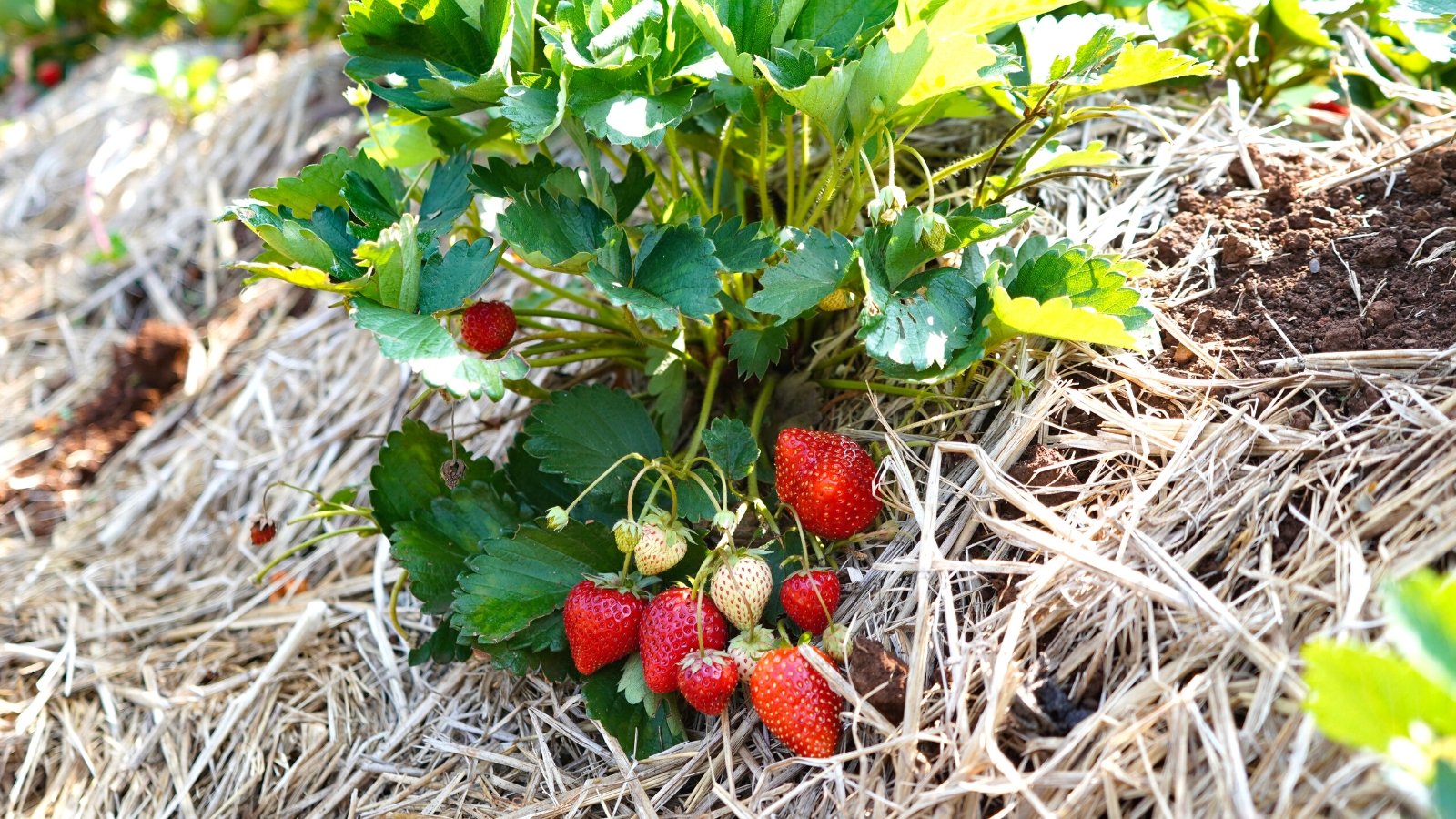
|
|
botanical name Fragaria x ananassa ‘Chandler’ |
|---|---|
|
|
plant type June-bearing |
|
|
sun requirements Full sun |
|
|
height About 8 inches |
|
|
hardiness zones 5 to 8 |
‘Chandler’ is one of the first strawberries I experienced growing, and while it doesn’t offer resistance to many diseases, its flavor is exceptional, and it provides growers with early-season berries.
Yields will be highest on the western coastline of the United States and southeastern states in zones 5 to 8. The pH preferred is around 6.0, and plants must be watered when no rainfall is present. Roots tend to remain shallow and plants will spread up to a foot.
Pro tip: When first planting, pinch off flower buds that are present and continue doing so for several weeks to encourage the plant to focus on root development and leaf production. It may seem counterintuitive but the result will be larger, juicier fruits.
‘Honeoye’
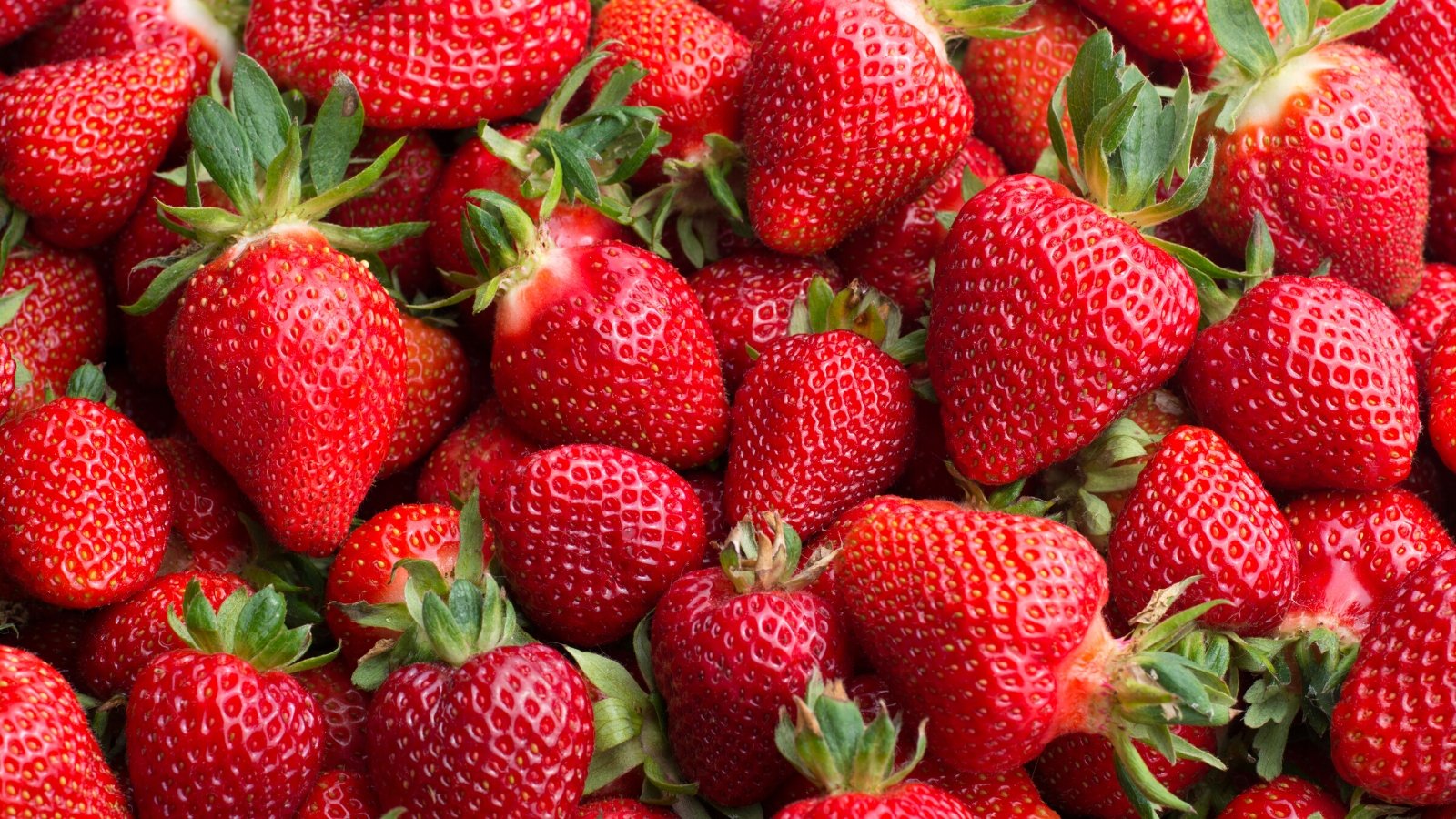
|
|
botanical name Fragaria x ananassa ‘Honeoye’ |
|---|---|
|
|
plant type June-bearing |
|
|
sun requirements Full sun |
|
|
height 3 to 6 inches |
|
|
hardiness zones 4 to 9 |
This early mid-season variety is known for high-yielding plants that produce large, dark berries. Allow fruit to ripen on the plant for the best flavor, which improves in warmer conditions. ‘Honeoye’ is popular among Midwest and Northeast growers.
Though it will tolerate partial shade, productivity is best when planted in full sun. Transplant when soil temperatures reach at least 60°F (16°C).
Pro tip: Incorporate well-aged, high-quality compost into your soil before transplanting strawberry plants or plugs for nutrients, increase drainage and overall soil health. Soil test each year if your plants are growing as perennials to ensure they have the nutrients they need for long-term success.
‘Earligrow’
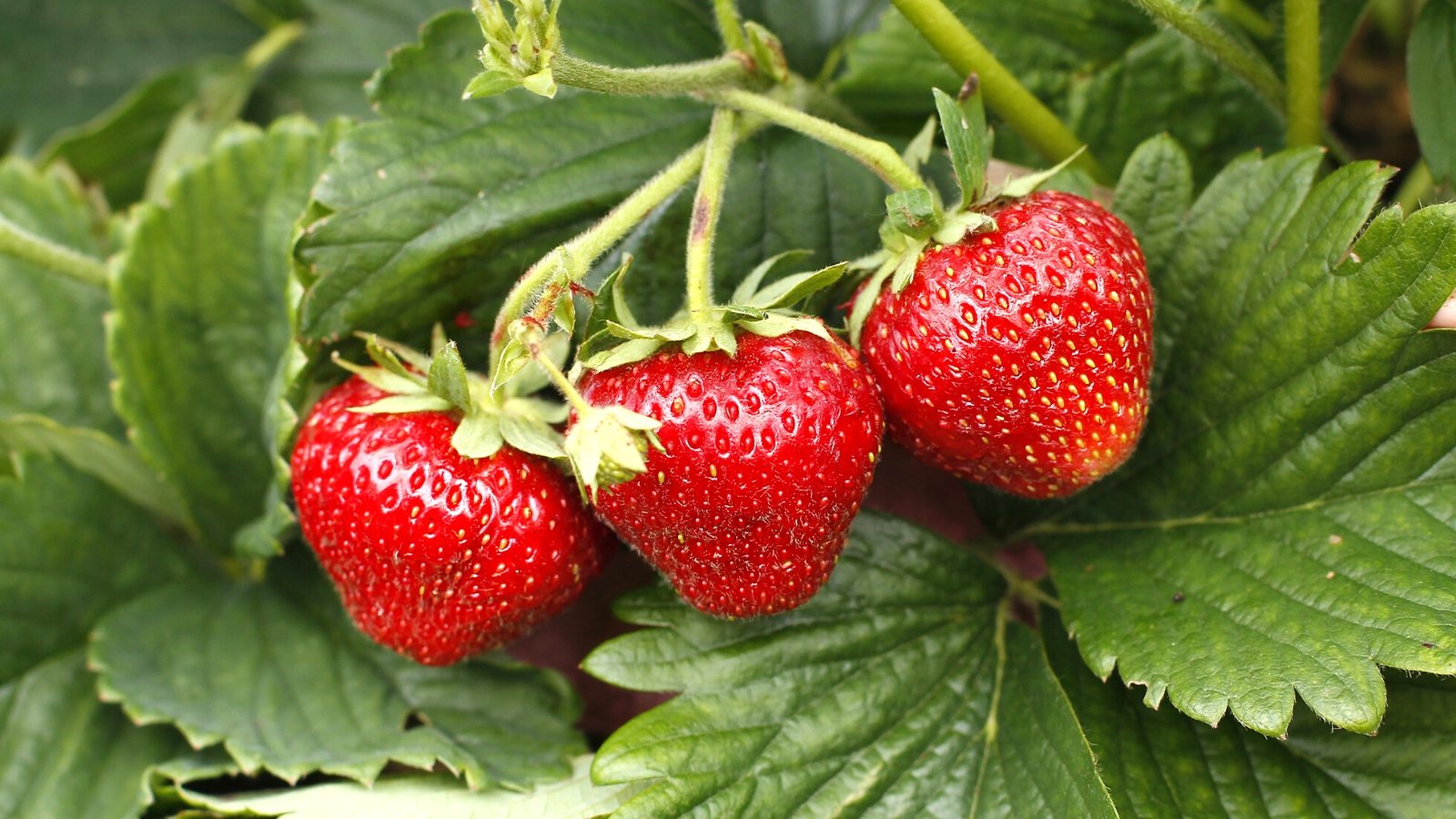
|
|
botanical name Fragaria ananassa ‘Earliglow’ |
|---|---|
|
|
plant type June-bearing |
|
|
sun requirements Full sun |
|
|
height 8 to 12 inches |
|
|
hardiness zones 4 to 8 |
As the name suggests, ‘Earligrow’ is usually the first strawberry that will ripen each season. Plants are adapted to climates of the Mid-Atlantic, Midwest, and Northeast regions of the United States.
It will begin to bloom in late spring, and the conical fruits will begin to ripen in the summer. Several weeks will bring large amounts of berries that are medium to large, deep red, and consistently shaped and sized.
‘Earligrow’ will spread about 8-12 inches, so give them about 18 inches of spacing. This variety offers good resistance to red stele, root rot, and verticillium wilt.
‘Jewel’
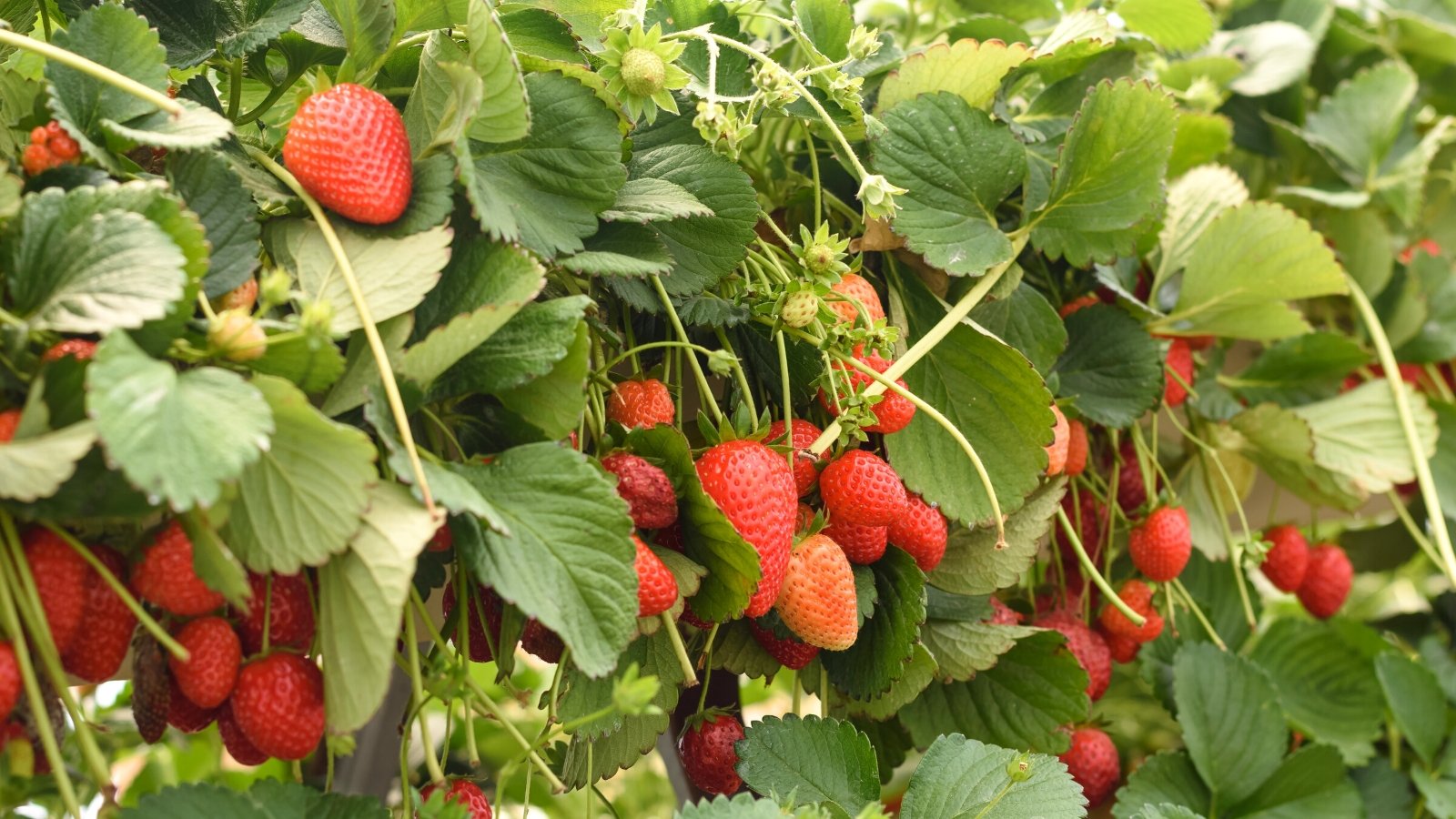
|
|
botanical name Fragaria x ananassa ‘Jewel’ |
|---|---|
|
|
plant type June-bearing |
|
|
sun requirements Full sun |
|
|
height 6 to 9 inches |
|
|
hardiness zones 4 to 8 |
‘Jewel’ is a vigorous and moderately winter hardy plant. Fruits are large, firm, wide, and wedge-shaped and come on strong late mid-season. The flavor and aroma are excellent. Cornell University owns the license for this variety.
When planted in the spring, ‘Jewel’ will start bearing fruit after one year and is a mid-season fruit-bearer. Space them at 12-24 inches. The growth rate is medium.
Store berries around 40°F (4°C) unwashed post-harvest for the longest shelf life. To freeze, add them to a cookie sheet and freeze overnight. Then add them to an airtight container labeled with the date and store up to one year.
‘MNUS 248’
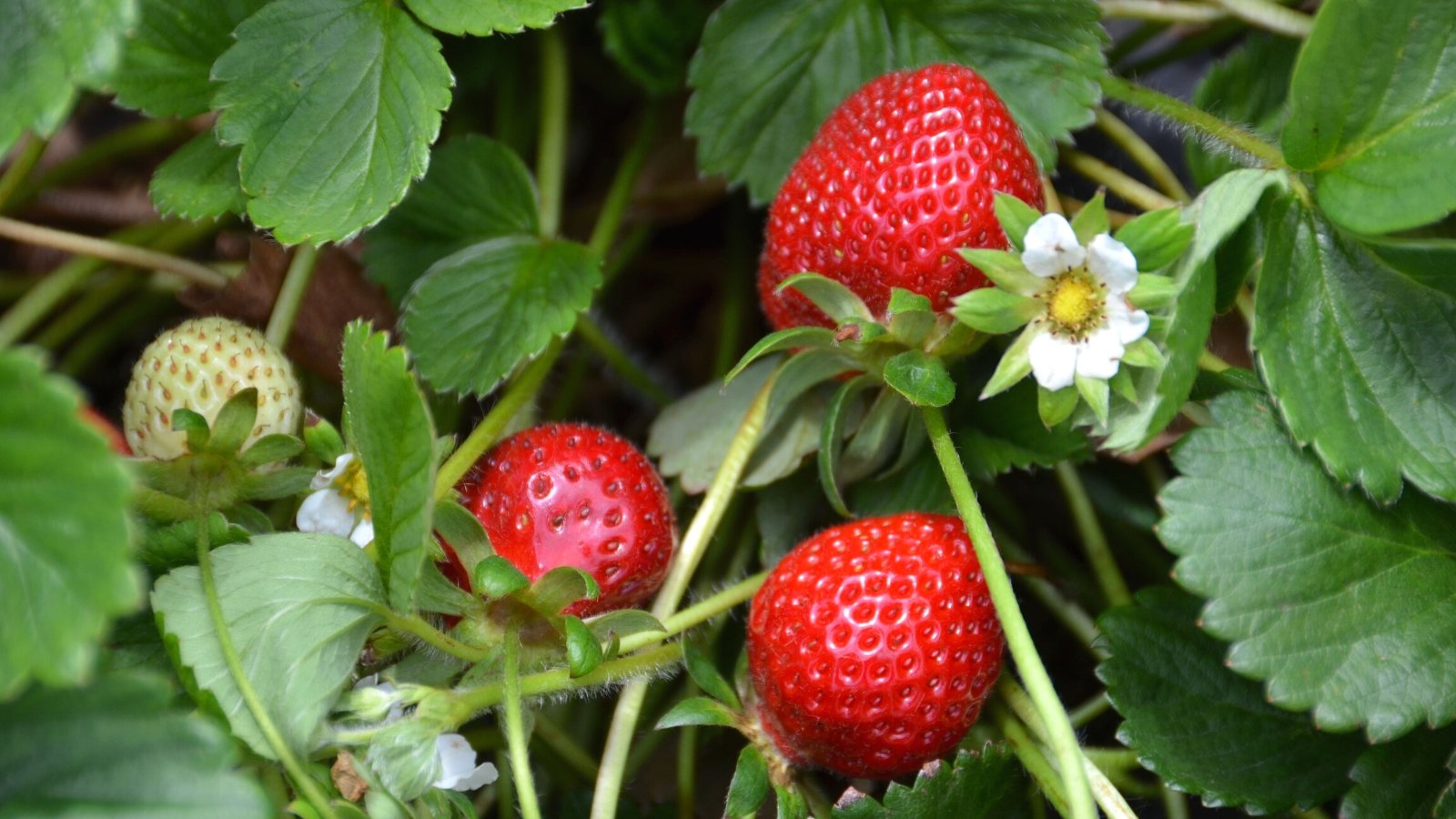
|
|
botanical name Fragaria x ananassa ‘MNUS 248’ |
|---|---|
|
|
plant type June-bearing |
|
|
sun requirements Full sun to partial shade |
|
|
height 4 inches |
|
|
hardiness zones 3 to 12 |
Sold as ‘Mesabi™’, this self-pollinating perennial can live up to ten years with proper care. It grows fast and produces one large crop of sweet, heart-shaped berries with a creamy center in late spring to early summer. Its creation was a collaboration of breeders at the University of Minnesota, the USDA Agricultural Research Service Fruit Laboratory, and was released to the public in 1999. It’s trademarked by the University of Minnesota.
Plants typically die back to the crown and will regrow in the spring, similar to rhubarb. Add mulch before the winter to protect its crown and label plants to not trample over them or mistakenly dig them up.
Design ‘Mesabi™’ into an edible garden as the featured spiller in pots and containers or plant it where it can spread up to 18 inches.
‘Flavorfest’

|
|
botanical name Fragaria ananassa ‘Flavorfest’ |
|---|---|
|
|
plant type June-bearing |
|
|
sun requirements Full sun |
|
|
height 12 to 16 inches |
|
|
hardiness zones 4 to 7 |
What do you think ‘Flavorfest’ is known for? If you guessed it’s deliciously flavored berries, you’re spot on. They’re sweet, plump, and juicy, produced in large crops over the summer months. ‘Flavorfest’ was bred by the USDA.
Plants have a strong resistance package against crown and fruit rot and red stele, perfect for organic growers. To propagate new plants with runners, use the layering method.
Fill a container with potting mix, set it next to the strawberry plants, lay runners over the top of the container, and bury them into the mix. Water them in and wait several weeks for new roots to form before snipping them off the mother plant.
Pro tip: Remove insect netting when flowering begins for proper pollination.
‘Allstar’
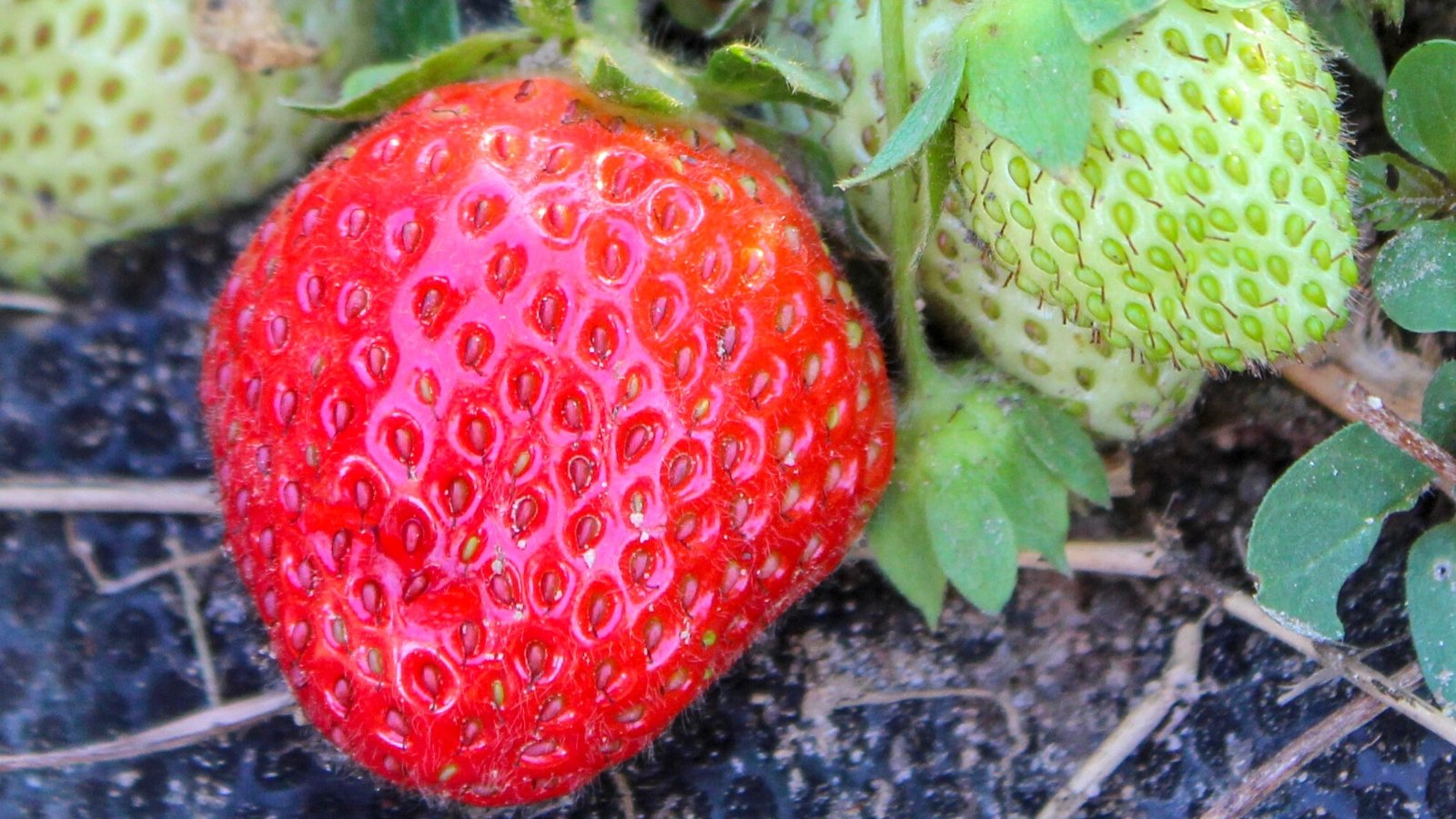
|
|
botanical name Fragaria ‘Allstar’ |
|---|---|
|
|
plant type June-bearing |
|
|
sun requirements Full sun |
|
|
height 6 to 9 inches |
|
|
hardiness zones 4 to 8 |
‘Allstar’ is a late mid-season bloomer, producing large amounts of glossy red, mildly sweet berries. It’s reliable and adapted to climates in the East and Central Midwest but has been known to produce high yields in the South. Once plants are established, the growth rate is fast.
These plants are highly resistant to red stele and moderately tolerant of wilt. Keep the deer away come June, when these plants will be full of bright red berries. They’ll hold up nicely to being frozen but are great to eat fresh, too.
Pro tip: When bare root plants arrive, soak them for several hours in clean water to rehydrate them before transplanting. If you are unable to plant them right away, keep them in the plastic bag they arrived in loosely closed to allow airflow. Mist them with water every few days. Plant as soon as possible.
‘Surecrop’
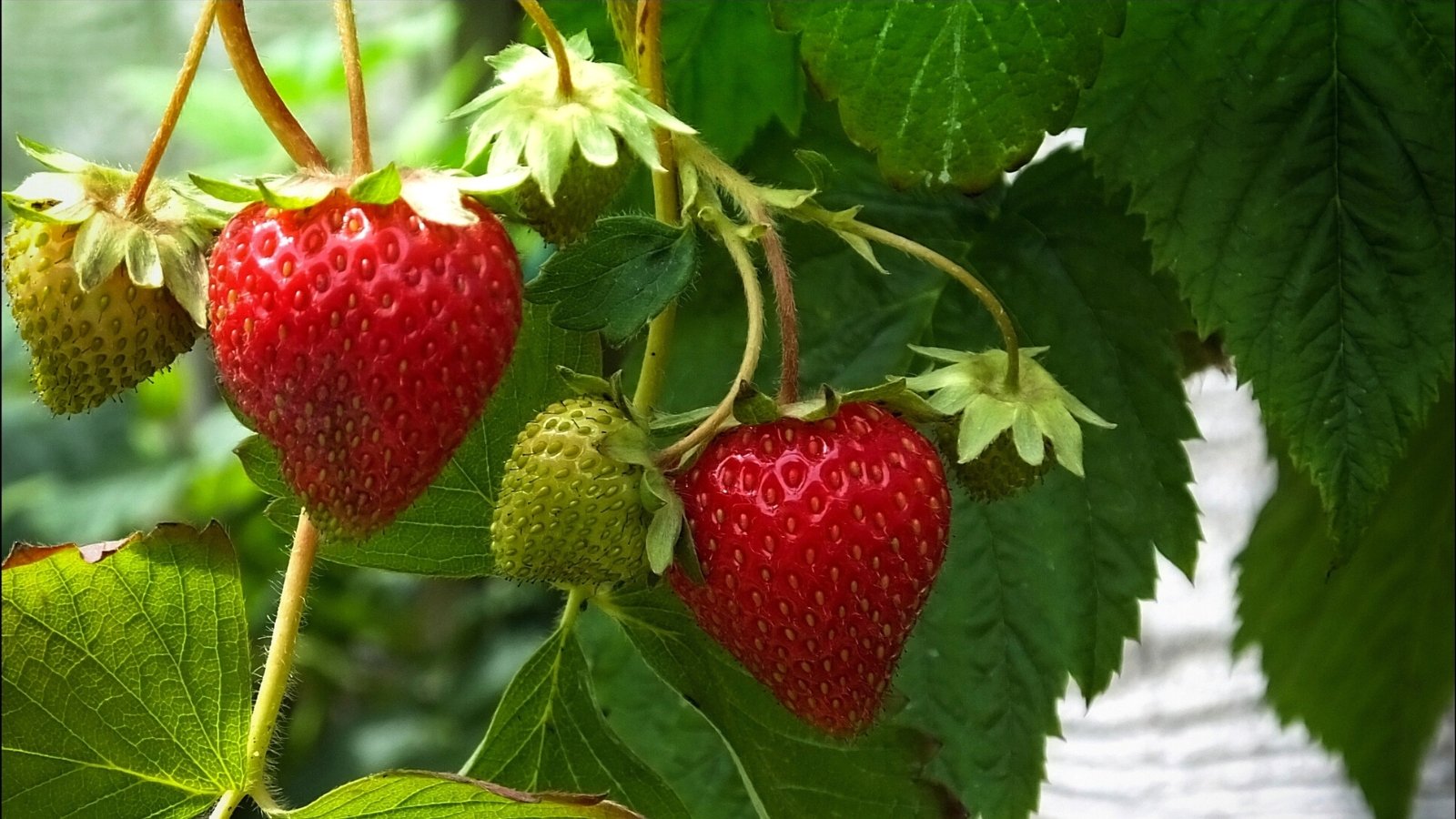
|
|
botanical name Fragaria ‘Surecrop’ |
|---|---|
|
|
plant type June-bearing |
|
|
sun requirements Full sun |
|
|
height 6 to 9 inches |
|
|
hardiness zones 4 to 8 |
Another producer of large, conical, red berries, ‘Surecrop’ is one of the lowest maintenance strawberry varieties out there. This tried and true variety was introduced by the USDA in 1956 and has been trusted by gardeners ever since. Studies show minimal yield losses when compared to other varieties during drought conditions.
Its disease-resistance package is strong and the plants are very vigorous. pH preferred is between 5.5 and 6.5, and the soil should be well-draining, rich, and slightly sandy.
Pro tip: Use shade cloth during periods of extreme direct sunlight in the summer to protect berries against intense heat and scorch.
‘Wendy’

|
|
botanical name Fragaria ananassa ‘AC Wendy’ PP18340 |
|---|---|
|
|
plant type June-bearing |
|
|
sun requirements Full sun |
|
|
height 8 to 10 inches |
|
|
hardiness zones 3 to 8 |
Though the berries of ‘Wendy’ are a bit smaller, this variety gets you that sought-after, fresh flavor earlier in the season.
‘Wendy’ is especially great in cooler climates as they can handle cold spring temperatures. Transplant them as soon as the soil can be worked, using row cover as needed for protection. Use plastic mulch, straw, or landscape fabric with burned planting holes for added warmth if desired.
This variety can be planted in the fall in zones 5+ for a spring harvest, and you may see flowers in the first year.
‘Festival™’
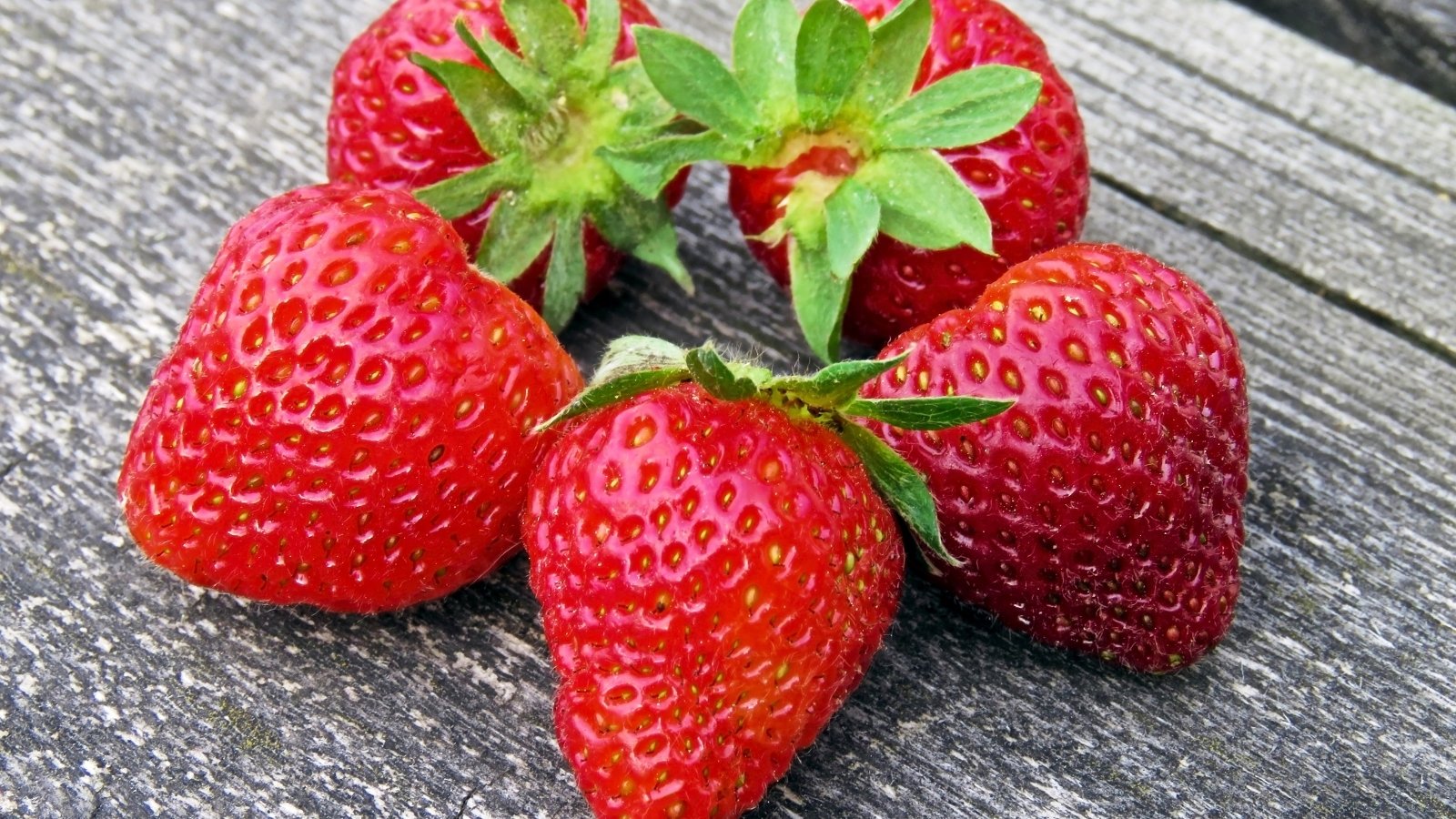
|
|
botanical name Fragaria ‘Festival’ |
|---|---|
|
|
plant type Ever-bearing |
|
|
sun requirements Full sun |
|
|
height 8 to 12 inches |
|
|
hardiness zones 9 to 11 |
The long stems of ‘Festival’ make harvesting a delight. The medium to large berries are deep red and sweet and boast an amazing strawberry aroma. The soil must be adjusted significantly to decrease nitrogen and increase potassium and calcium levels to ensure firm fruit with a good shelf life.
This variety performs well in containers and towers, providing juicy berries from late spring through summer. When combined with an early bloomer like ‘Wendy’, there should be no shortage of strawberry shortcake ingredients.
This heat lover is an easy pick for warm-climate growers, popular in Texas and Florida. Berries hold up well during storage.
‘Sweet Ann’

|
|
botanical name Fragaria ananassa ‘Sweet Ann’ |
|---|---|
|
|
plant type Day-neutral |
|
|
sun requirements Full sun to partial shade |
|
|
height 12 to 18 inches |
|
|
hardiness zones 5 to 8 |
‘Sweet Ann’ puts out an impressive amount of glossy, bright red, conical fruits with medium firmness. Plants are easy to control with a moderate amount of runners. The flavor is exceptional and the shape holds firm during storage and transport.
This variety is perfect for home gardeners for its disease-resistance package, but watch out for fusarium wilt. Avoid overhead watering and keep equipment and tools sanitized between uses and the garden free of debris to prevent this disease. Allow soil to dry out a bit between watering sessions.
While high tunnels often present ideal conditions for fungal diseases to thrive, studies show ‘Sweet Ann’ has been identified as a promising variety to grow successfully in protected areas. The high sugar content keeps yields high and fruits marketable, whereas others’ shapes and yields suffer.
‘Fort Laramie’
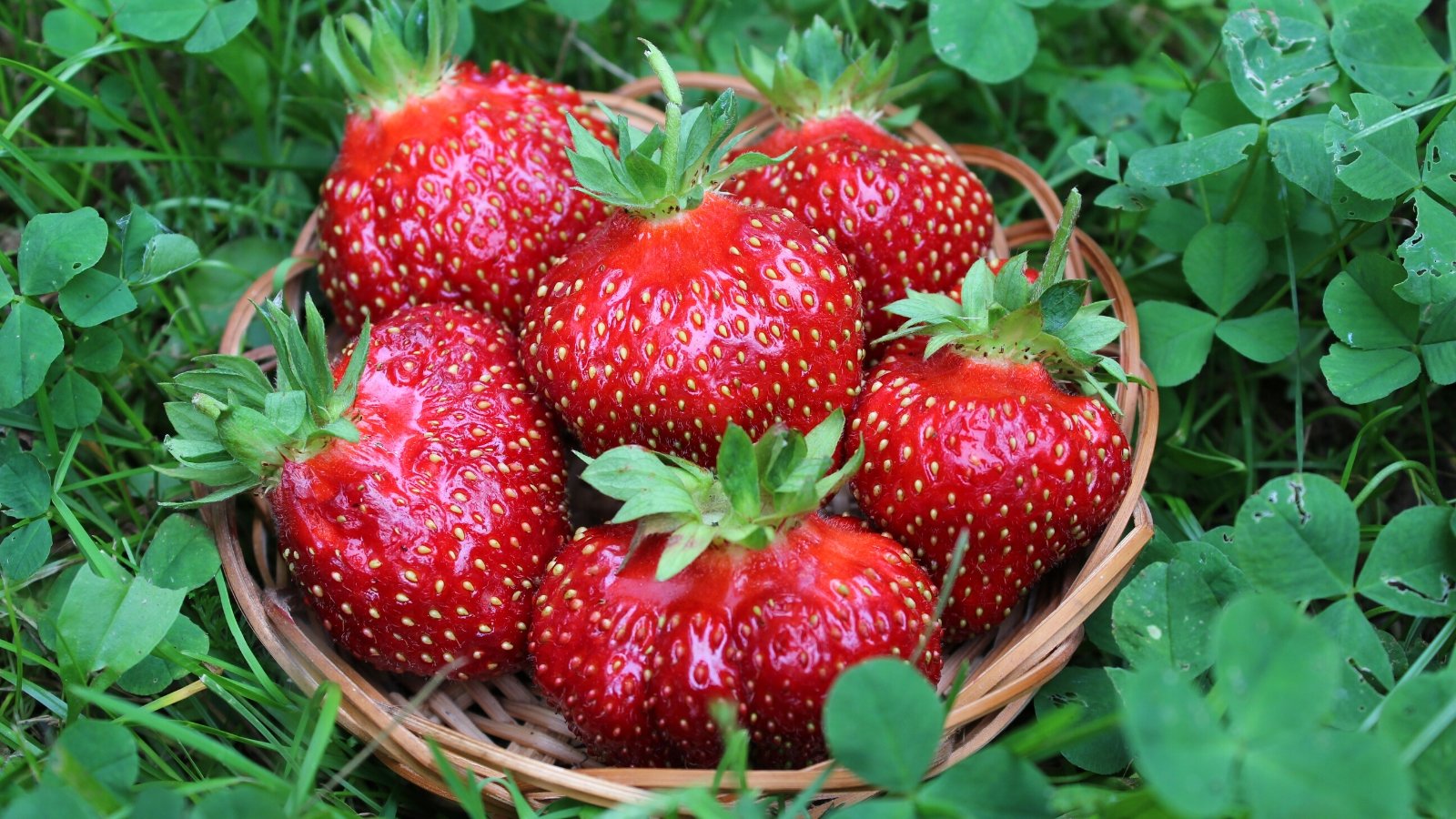
|
|
botanical name Fragaria ananassa ‘Fort Laramie’ |
|---|---|
|
|
plant type Ever-bearing |
|
|
sun requirements Full sun |
|
|
height 8 to 12 inches |
|
|
hardiness zones 3 to 7 |
This ultra-sweet variety is great for northern growers, hardy down to zone 3, even without mulch. Take advantage of its runners to create new plants to share with friends or fellow gardeners. Alternatively, root five to six of them per plant to fill out your strawberry plot and create the next generation of plants.
Berries of ‘Fort Laramie’ are large, juicy, and have a quintessential strawberry shape and color.
When transplanting plugs, set the crown just below the soil level, surround it with native soil, and tamp it down to ensure good root-to-soil contact. Remove the first flush of flowers as they get established. Install drip irrigation lines right as part of the transplant process so there’s no delay in watering.
‘Alexandria’
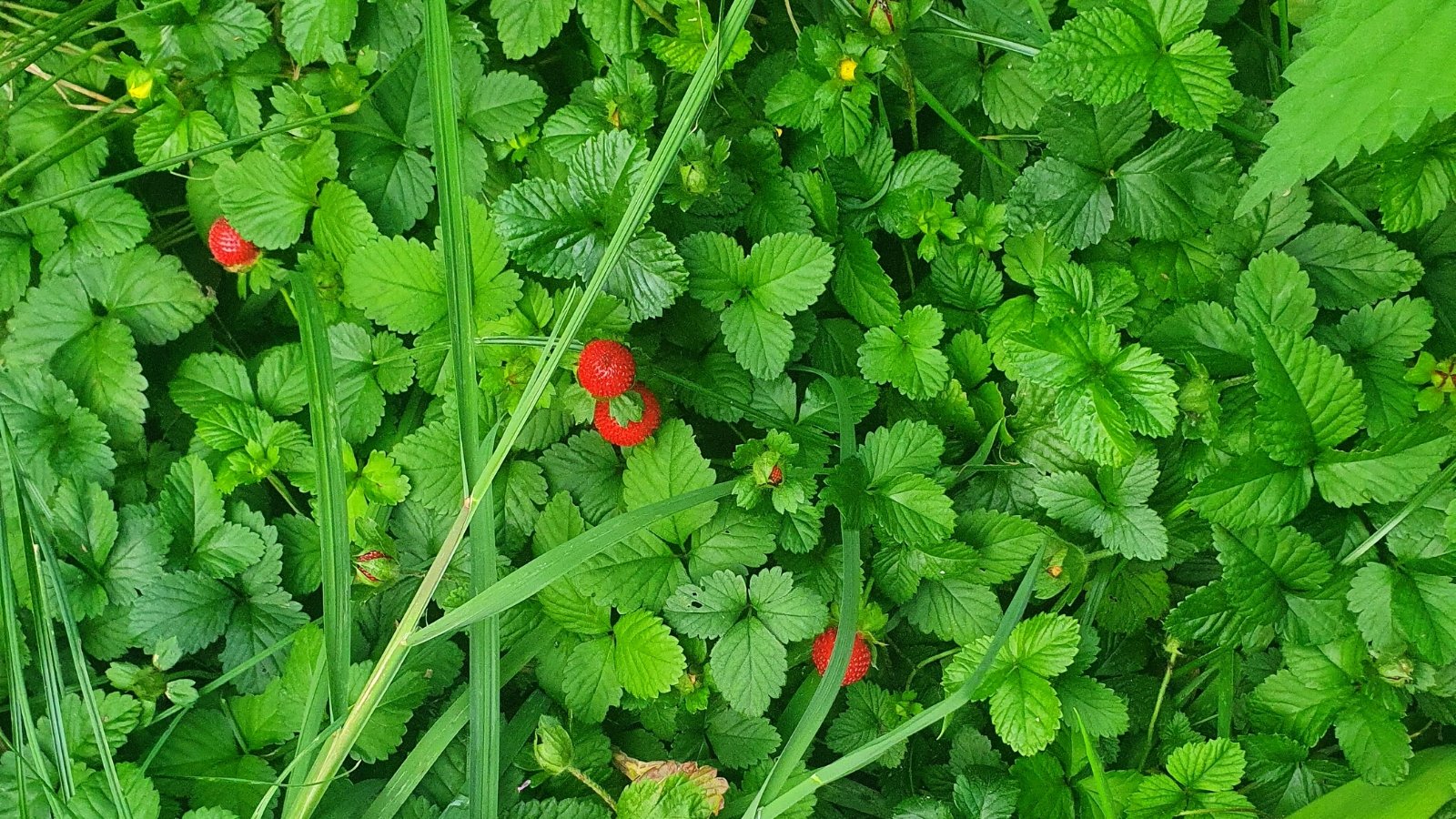
|
|
botanical name Fragaria vesca ‘Alexandria’ |
|---|---|
|
|
plant type Day-neutral |
|
|
sun requirements Full sun |
|
|
height 6 to 8 inches |
|
|
hardiness zones 5 to 8 |
This is a sweet, decorative, yet practical Alpine strawberry perfect for small-space gardeners, container growers, and edible landscapes. Berries are smaller than standard strawberries but larger than wild varieties, and their flavor is delicious.
They don’t produce many runners, and the growth habit stays compact, making them perfect for a garden pathway, rock gardens, and containers.
The small white flowers are edible and have a slight strawberry flavor. Use them to garnish salads or summer mock/cocktails.
‘Albion’
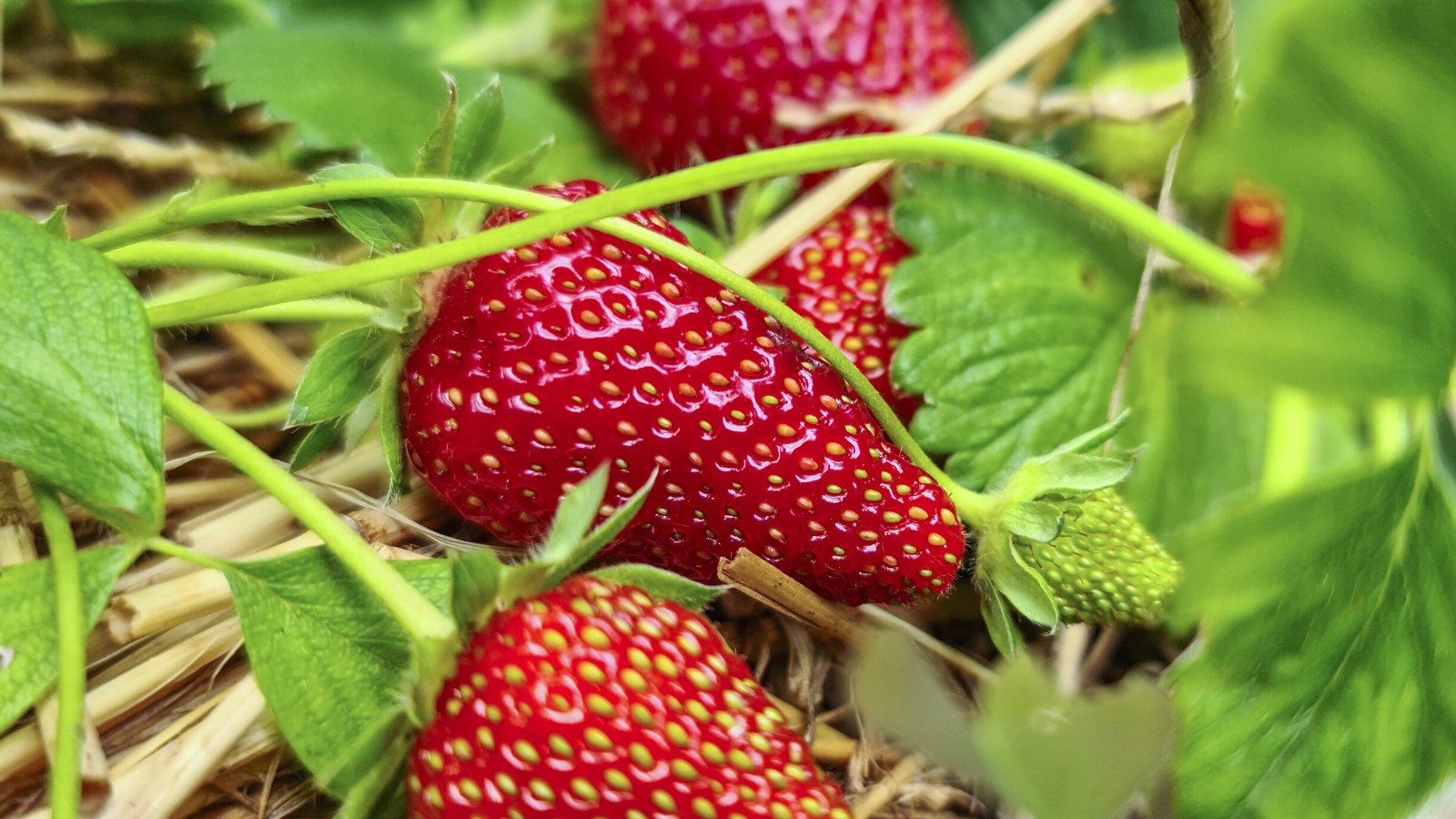
|
|
botanical name Fragaria x ananassa ‘Albion’ |
|---|---|
|
|
plant type Day-neutral |
|
|
sun requirements Full sun to partial shade |
|
|
height About 12 inches |
|
|
hardiness zones 4 to 9 |
‘Albion’ is known for its huge, firm berries in the classic conical shape, sweet flavor, and bright red shade. These berries are perfect for eating freshly picked from the plant but also freeze and preserve well. Plants will produce fruit from May to August under ideal conditions.
It has an amazing disease resistance package, including verticillium, phytophthora crown rot, and intermediate resistance to anthracnose crown rot. I highly recommend this variety for home gardeners for its ease of care and productivity.
Though hardy to zone 4, I recommend a heavy layer of weed-free straw mulch before frost sets in that remains on through winter. This will protect the plant’s crown and prevent early spring weed seeds from germinating.
‘Tristar’
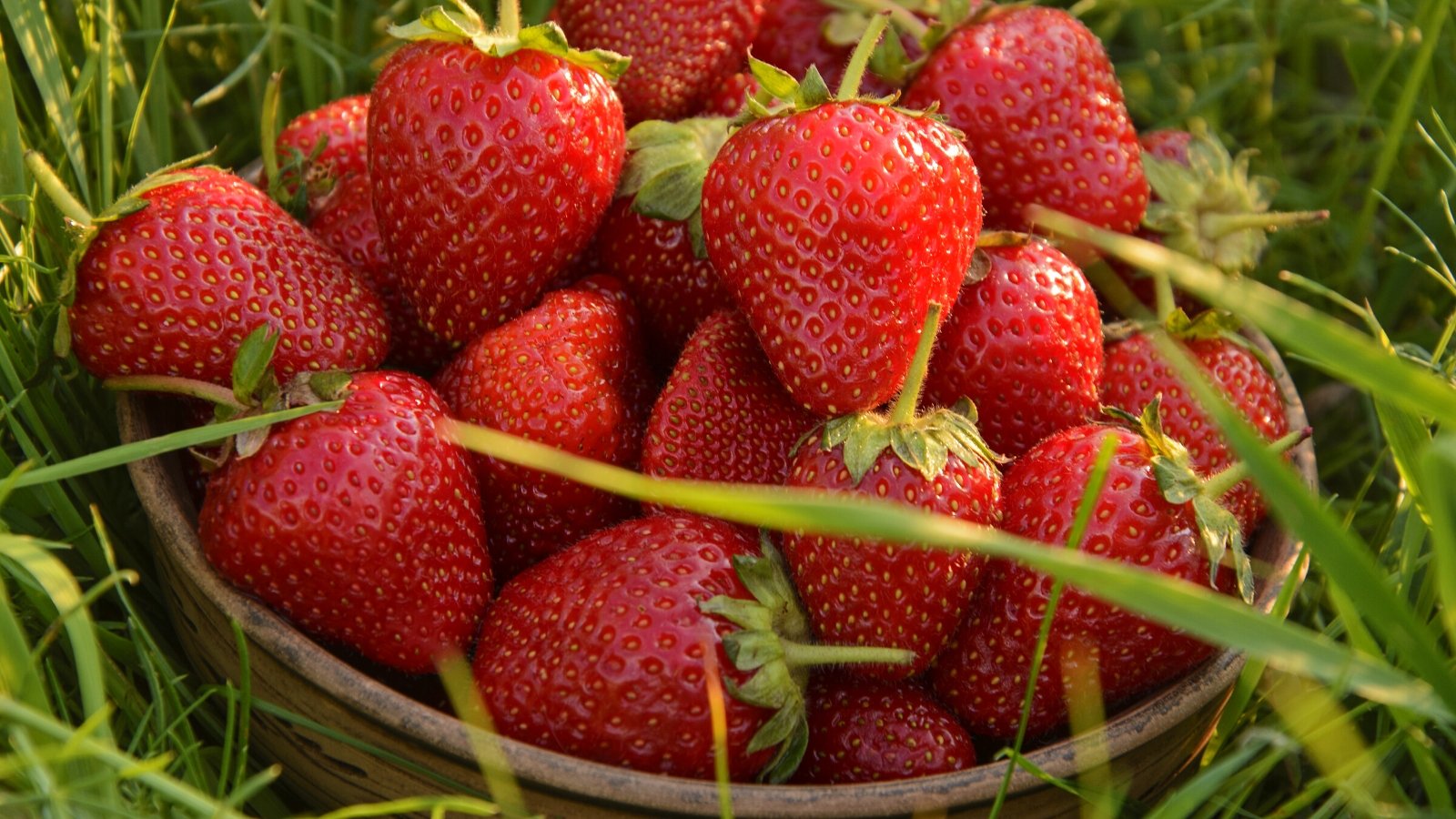
|
|
botanical name Fragaria x ananassa ‘Tristar’ |
|---|---|
|
|
plant type Ever-bearing |
|
|
sun requirements Full sun |
|
|
height 9 to 12 inches |
|
|
hardiness zones 4 to 9 |
The sweetness of ‘Tristar’ berries is perfect for pies and jams. These plants will flower from late spring until the first frost arrives. Plants may remain evergreen throughout mild, frost-free winters.
Space these plants at 18-24 inches. Remove runners to control your patch, or snip them off to create new plants. ‘Tristar’ performs well in hanging baskets or containers.
Though an excellent producer, this variety is more susceptible than others to foliage diseases and root rots. Ensure the soil is properly draining, loamy, and fertile. Water using drip irrigation.
‘Seascape’

|
|
botanical name Fragaria x ananassa ‘Seascape’ |
|---|---|
|
|
plant type Day-neutral |
|
|
sun requirements Full sun |
|
|
height 12 inches |
|
|
hardiness zones 4 to 7 |
If you’re looking for a high-yielding strawberry variety that performs well even during hot, dry summers, ‘Seascape’ is it. Introduced in 1992 by the University of California, it’s considered to be one of the best-tasting strawberries on the market today. It also performs well in cooler weather, making it an excellent choice for northern growers.
Berries are large, round, and flavorful and arrive mid-season. Critters seem to know the exact moment these sweet berries are ready for the picking. Harvest them every few days to keep them all to yourself.
Foliage is deep green and remains so in frost-free areas. A broad resistance to fungal diseases keeps plants healthy long-term. pH preferred is 6.5 to 6.8.
‘Tribute’

|
|
botanical name Fragaria x ananassa ‘Tribute’ |
|---|---|
|
|
plant type Day-neutral |
|
|
sun requirements Full sun |
|
|
height About 8 inches |
|
|
hardiness zones 4 to 8 |
Developed at the University of Maryland, ‘Tribute’ has earned its keep as a favorite variety for its vigorous growth and juicy, deep red, medium berries. It’s self-pollinating and tolerates leaf scorch and blight. pH preferred is 5.5 to 6.5.
Get your jam and pie recipes out because you’re going to be swimming in berries when ‘Tribute’ starts producing. They work well in hangers and containers, as their runners will produce berries without rooting. Avoid planting them in an area where frost settles to avoid winter damage.
Extend your season by adding these to your lineup alongside June-bearing varieties.
Key Takeaways
- Select the right type of strawberry for your garden and needs.
- Protect them from frost and pests.
- Ensure the soil is well-draining.
- Space plants at 9-24 inches, variety dependent.
- Snip runners to keep control of your patch.
- Water plants consistently but do not allow the soil to become soggy.
- Use insect netting, row cover, and organic sprays to keep pests, rodents, and birds away.
- Purchase plugs and bare-root plants from reputable sources.
Final Thoughts
If you love fresh strawberries and want to try growing some this year, there are plenty of home gardener-friendly options available in June-bearing, everbearing, and day-neutral varieties. Experiment with early, mid, and late-season varieties to keep your supply going all season long.









